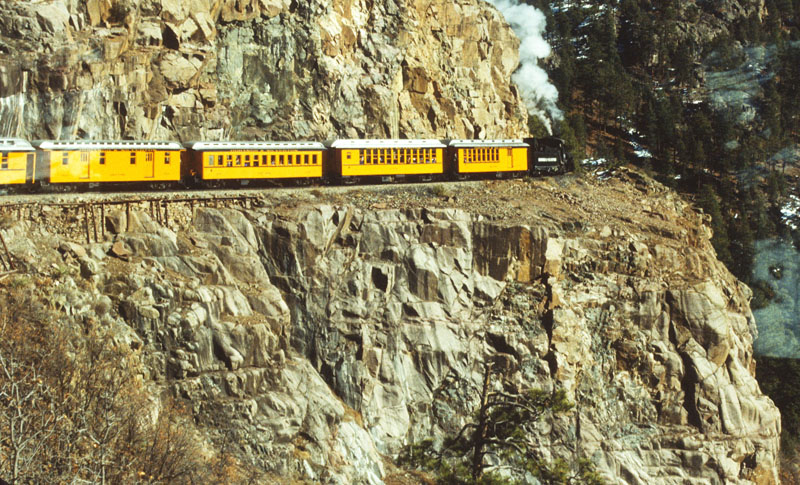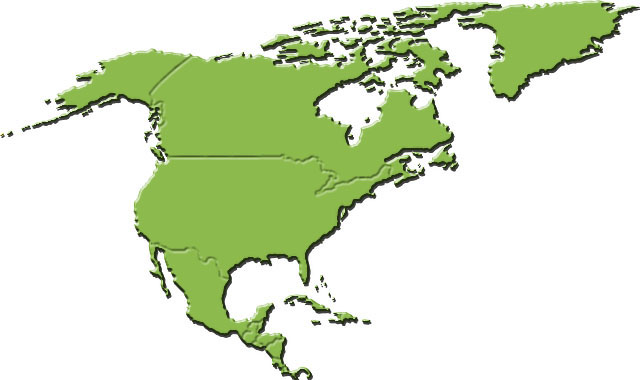Cataloging
The basics of cataloging
This section of the website is for those collectors who want to learn more about the process of cataloging.
My theory about cataloging is that the process really quite simple for those people who enjoy organizing information, objects, and ideas. The more difficult part is deciding what needs to be organized. In other words, what goes into the project and what doesn't. I have found that the hardest part of cataloging is creating a defined fence around the project to prevent project creep. The longer a project runs, the more pressure grows to let more information, objects, and ideas through the fence.
I had been collecting pricing information and descriptions of rail-related stocks and bonds for several years before I asked BNR Press to publish my work as a physical catalog. After owner Fred Schwan agreed, I had to devise a title. I pondered the title for a minute or two and came up with one I thought would be sufficiently precise to serve as the fence around the project: Stocks and Bonds of North American Railroads. After all, it neatly limited the location (North America), the subject (stocks and bonds), and the specialty (railroads.)
In truth, that "fence" was like trying to catch mosquitos with chicken wire.
All three parts of the project title – location, subject, specialty – needed tighter definition. I cover them lightly on this page, but you can find more elaborate discussions about Countries, Certificates, and Companies in the three sub-sections of "cataloging." Click on a button in the menu at left or in the top menu to learn more. Deciding the types of companies that fall under the very broad subject of "railroads" has been the most difficult part of the project, by far. Programming is not easy, but it is strictly unemotional. Telling correspondents what companies do and don't belong in the project is much, much more difficult. Jump ahead to Rules for listing companies if you want me to include a company not already in the database.
And if you spot a certain inconsistency in project coverage, you're not alone. A few years ago, I added the category of Coal Companies to the project. I did that because I was a coal geologist for many years and evaluated projects in every significant coal field in the U.S., Canada, and elsewhere. Besides, the numbers of certificates from North American coal companies is only a fraction of those from railroading. Oh, we also need to remember that railroads were highly dependent on coal supplies from Appalachia to the West Coast and from Mexico to Canada.
I will generally talk about this collectible stock and bond project from the viewpoint of railroad certificates, but every consideration applies to cataloging coal company certificates.
Definition of railroading

Railroads were the only effective method of moving large numbers of people and large quantities of goods over long distances (by land) until the end of World War I. Railroading was THE big business of the 19th and early 20th centuries. Railroading touched almost all industries in some way – and vice versa.
Manufacturing, agriculture, timbering, construction, ranching and travel were all heavily dependent on railroads. Many of those industries not only shipped by rail, but often used railroad equipment in their own facilities. It is that tight intertwinement that frequently makes it difficult to define the boundary between railroad companies and other types of businesses.
The boundary is even less distinct when considering individual companies. Information about individual businesses can be difficult, even impossible, to find. When further entangled with the emotions that drive collecting, decisions about inclusion and exclusion of specific companies becomes "tricky." Sometimes "problematic" when a collector gets mad about not including a favorite off-topic company.
Click on "Companies" in the menu at left if interested in learning more about the inclusion and exclusion of companies. There, you will find lists of companies considered "off-topic" as well as companies that "sound" like railroads, yet remain "mysteries."
Railroad stocks, bonds, and other documents
Difficulties periodically arise with questions about the cataloging of certain types of documents. Stocks and bonds are the core of the scripophily hobby and stocks and bonds are the core of this corner of the hobby.

There are, however, loads of certificates and documents that directly involved stocks and bonds, but never represented ownerships OF companies or loans made TO companies. Some, such as temporary or interim stocks and bonds played temporary roles as securities. Similar certificates represented fractions of shares or fractions of bonds, but not all were considered true securities until accumulated in sufficient quantities and converted into formally-issued stocks and bonds.
A little further removed were transfer documents which shifted ownerships and, theoretically, could have served as bridge securities in case of loss during the periods of mailing or carrying certificates from one place to another. Certificates of deposit served as proof of ownership while trusted companies held valid securities during periods of company upheavals. Documents like these were often printed by security engravers and printers and could have been considered security "stand-ins" under special circumstances.
Another large portion of these "near security" documents were those that represented dividend or interest payments that could be used only for the purchase of more securities.

Further removed were documents like subscription forms, assessment requests and purchase receipts. Even more esoteric documents are known. The question is not whether these documents are interesting, but how far do we stretch the definition of "stocks and bonds."
The vast majority of collectors collect full-fledged stocks and bonds issued by full-fledged railroad companies. The further we move from that nucleus, the fewer collectors we find and the more diverse the questions about peripheral documents. Like companies on the boundaries of "railroading," there are surprising numbers of certificates on the boundaries of "securities." Few collectors care much about these "border" documents, but I still need to decide whether to catalog them or not. My basic rule for cataloging new documents is that they must:
- have been printed by companies
- display printed corporate names
- involve investment in stocks or bonds
Click on "Certificates" in the menu at left for more discussions, histories, and purposes of the various types of stocks, bonds and other documents cataloged.
Railroads in "North America"

It seems deciding which certificates to catalog on the basis of location would be trivial. However, I intend to catalog all certificates involved with North American railroading and define North America as:
- all countries north of Colombia
- all islands north of the South American coast including Greenland
- all the Hawaiian islands
...but not every such certificate was printed or issued in North America.
British investors have always been involved in founding and funding North American railroads and many early certificates were denominated in Pounds Sterling. Dutch investors probably committed more total money to North American railroads than all other Europeans. Certificates from Dutch, German, Belgian and British investment "committees" are known although none are common. This project catalogs all such foreign certificates as evidence of foreign investments in railroads on this continent.
Certificates related to companies that incorporated in North America but invested in railroads elsewhere are NOT cataloged.
Click on "Companies" in the menu at left to see lists and related details about all countries, states and provinces cataloged.